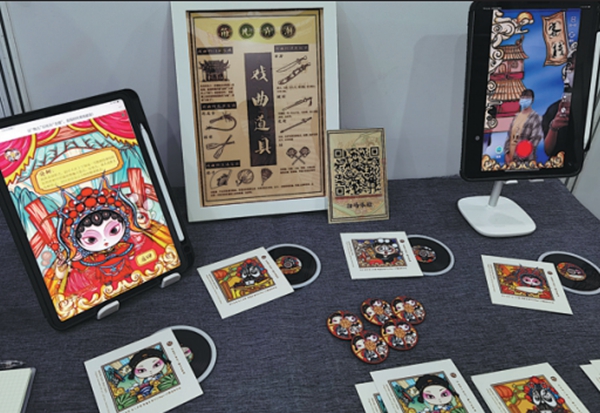Turning legend into a reality
By Cheng Yuezhu | China Daily | Updated: 2021-06-23 08:46

Many graduates chose the production as a subject matter for the exhibition, creating drawings and designs that give their own rendition of the love story between a snake-turned-woman and a kindhearted young man.
Shao Jiawei, majoring in digital media arts, is one such student. His graduation project was a pop-up book with augmented reality features.
The book provides six main scenes from the original production, with detailed illustrations of the characters as well as layers of drawings of architecture and landscape. The book includes script excerpts of each scene and enclosed cards with QR codes, which viewers can scan to read the synopsis and lyrics and watch a short animation showing the movements of the characters.
"The Legend of White Snake is one of the most eminent productions of our school, and the original story has been adapted into TV series and films in recent years. For me, a book is an educational way to inherit traditional culture," Shao says, adding that the pop-up book will be good material for the youth to know more about Peking Opera and also serve as a collectible item for the art form's fans.
Another student, Jia Guangqing, designed a digital picture book with user interaction and eye-tracking technology. It tells the story of Peking Man fossils from Zhoukoudian in suburban Beijing.
Entitled Travel to the Distant Past, the story adopts the viewpoint of a child, who along with his parents travels back in time. In different eras, they learn about the lifestyles and customs of ancient people, including burial rituals and fire-making technique.
As a student of interactive design, Jia has been introduced to various methods that can provide a captivating experience to the audience, but she chose the eye-tracking device to make her design enjoyable for children with motor neuron disease.
"In this age of technological development, we can't focus only on the general public. I hope that children with special needs can also experience the convenience and fun of advanced technology," Jia says.
In 2020, she visited the Zhoukoudian site and discovered that the museum was experimenting with ways to bring the exhibits online. She then developed an interest to try out for herself. "The site remains stationary. You need to go there to learn about it. I thought maybe I could bring it online, so it can appeal to a wider audience."
The exhibition presented works of 17 postgraduate students who have majored in opera animation, visual design and media art, as well as 68 undergraduate students who are majoring in animation, digital media art, visual communication design and fine arts.
"The exhibition shows the creativity of our graduates and that traditional culture gives a lot more to explore in the new era. It's gratifying to see that students have transformed their years of learning into such works, and that they have given a modern interpretation to the traditional arts," says Yin Xiaodong, head of the academy.
























